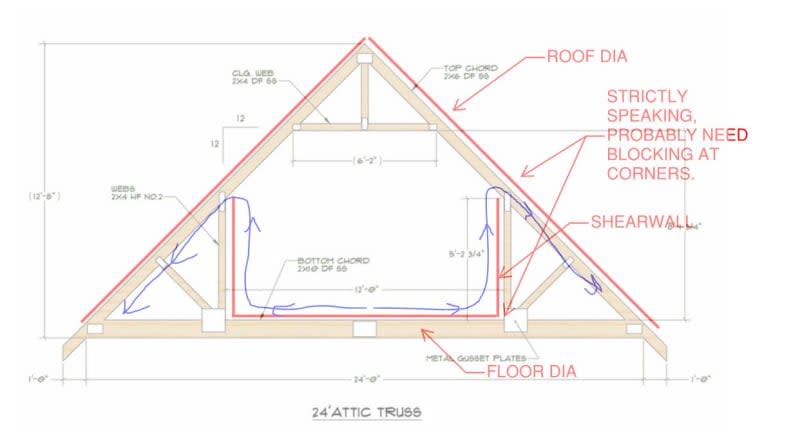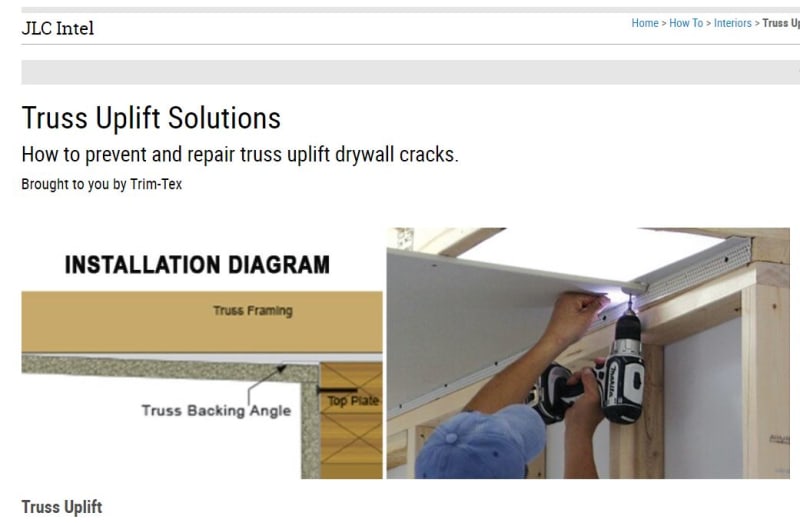Hello, everyone. Seems like all my posts have been about diaphragm action lately. Here's another one I'm working through on a current job.
I have attic trusses with "floor" sheathing and would like to make use of that sheathing as I diaphragm. One of my concerns is that I know there will be a vertical web member that will interrupt the wood structural panels. One option is to notch around these vertical webs but is see that being problematic in the field (i.e. nice on paper but seems like it would cause the GC a headache).
Now, I realize that I could sheath the top and bottom of the truss chord (1 for floor sheathing and 1 as a ceiling diaphragm). This would be my last resort with this sort of option since I don't want to double the cost of the sheathing.
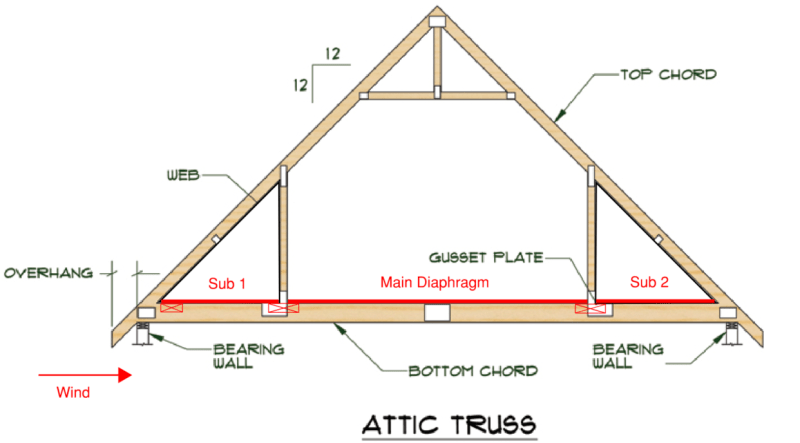
Moving forward, my concerns/questions are as following:
1. Without a ceiling diaphragm, do I need to be concerned about the mechanism by which lateral wind load will go from the top plate into the floor diaphragm? My thinking is there is some local transfer of axial force through the bottom chord that gets picked up by the diaphragm.
2. Is it necessary to have the sub diaphragm at each end as shown in the image below? Or would the truss bottom chord (behaving like a strut) be good enough to get the load into the "Main Diaphragm"? Obviously, it'll still be sheathed due to function of the attic, but I'd just ignore it's contribution. On the other hand, the truss manufacturer might require some additional webs at each end to make it work.
Sheathing and Blocking for discontinuous panels:
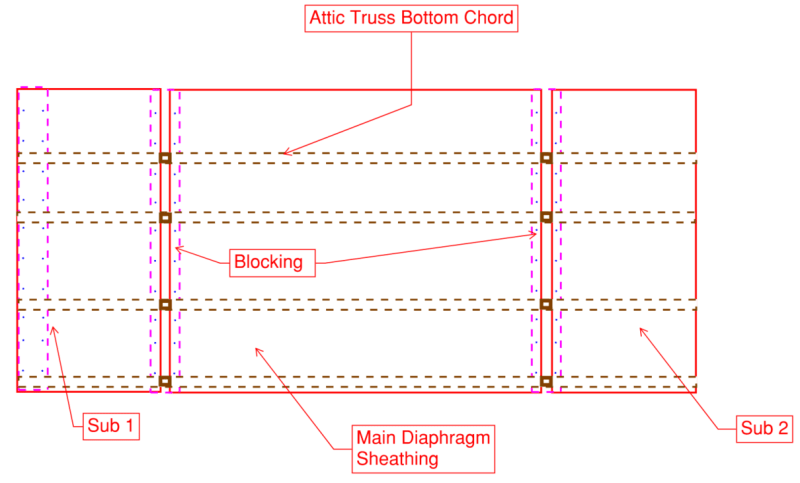
Additional Truss webs where Sub1/Sub2 no longer seems like an option:
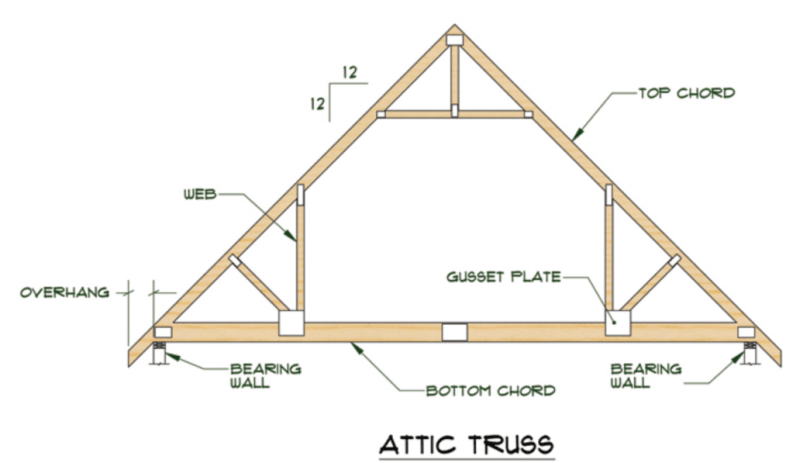
I have attic trusses with "floor" sheathing and would like to make use of that sheathing as I diaphragm. One of my concerns is that I know there will be a vertical web member that will interrupt the wood structural panels. One option is to notch around these vertical webs but is see that being problematic in the field (i.e. nice on paper but seems like it would cause the GC a headache).
Now, I realize that I could sheath the top and bottom of the truss chord (1 for floor sheathing and 1 as a ceiling diaphragm). This would be my last resort with this sort of option since I don't want to double the cost of the sheathing.

Moving forward, my concerns/questions are as following:
1. Without a ceiling diaphragm, do I need to be concerned about the mechanism by which lateral wind load will go from the top plate into the floor diaphragm? My thinking is there is some local transfer of axial force through the bottom chord that gets picked up by the diaphragm.
2. Is it necessary to have the sub diaphragm at each end as shown in the image below? Or would the truss bottom chord (behaving like a strut) be good enough to get the load into the "Main Diaphragm"? Obviously, it'll still be sheathed due to function of the attic, but I'd just ignore it's contribution. On the other hand, the truss manufacturer might require some additional webs at each end to make it work.
Sheathing and Blocking for discontinuous panels:

Additional Truss webs where Sub1/Sub2 no longer seems like an option:


